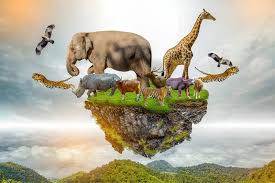Wildlife conservation has become a crucial concern as human activities, habitat destruction, climate change, and poaching continue to threaten biodiversity. While there have been tremendous conservation efforts that led to inspiring success stories, numerous challenges still persist in protecting wildlife. This article explores both the victories and the hurdles in wildlife conservation, emphasizing the importance of continued global efforts to safeguard our planet’s biodiversity.
Success Stories in Wildlife Conservation
Despite the threats faced by many species, several remarkable success stories demonstrate how dedicated conservation efforts can make a difference.
- The Comeback of the Giant Panda
The giant panda, once classified as an endangered species, has seen a remarkable recovery thanks to focused conservation programs in China. Strict measures, including habitat restoration, captive breeding, and anti-poaching initiatives, led to the species being downgraded from “endangered” to “vulnerable” by the IUCN in 2016. Today, giant panda populations in the wild are steadily increasing. - The Bald Eagle’s Recovery
The bald eagle, a symbol of American freedom, was on the brink of extinction due to habitat loss and the effects of the pesticide DDT. Conservationists and environmental policies like the U.S. Endangered Species Act and the banning of DDT played a vital role in the eagle’s recovery. By 2007, the bald eagle was removed from the endangered species list, with its population increasing from 417 nesting pairs in 1963 to over 71,400 by 2021. - Tigers in India
The Bengal tiger population has long been threatened by poaching and habitat destruction. India has taken bold steps through Project Tiger, a national conservation program that began in 1973. Today, India is home to nearly 70% of the world’s tigers, with a population that has grown from 1,411 in 2006 to over 2,967 in 2021, representing a significant recovery. - Humpback Whale Revival
Humpback whales, once severely threatened by commercial whaling, have made a remarkable comeback thanks to global bans on whaling, particularly the International Whaling Commission’s (IWC) moratorium. Conservationists worked tirelessly to protect these magnificent creatures, and the humpback whale population has grown from a few hundred individuals to over 80,000 worldwide.
Ongoing Challenges in Wildlife Conservation
While there have been victories, wildlife conservation faces ongoing challenges that require global collaboration and long-term strategies.
- Habitat Destruction
Habitat loss remains one of the most significant threats to wildlife, driven by human activities such as agriculture, urbanization, logging, and mining. Deforestation, in particular, is a major concern, especially in biodiverse regions like the Amazon rainforest, where countless species are displaced. Without the space to roam, feed, and reproduce, species are at greater risk of extinction. - Poaching and Illegal Wildlife Trade
Despite efforts to combat poaching, illegal hunting and wildlife trade continue to threaten species such as rhinos, elephants, and pangolins. These animals are often targeted for their horns, tusks, or scales, which are sold on the black market for traditional medicine or luxury goods. Wildlife trafficking not only devastates populations but also disrupts ecosystems. - Climate Change
Climate change is one of the biggest long-term threats to wildlife. Rising global temperatures, shifting weather patterns, and sea level rise are altering ecosystems at an unprecedented pace. Species like polar bears and sea turtles are already facing critical challenges due to melting ice caps and changes in ocean temperatures, which affect their food sources and nesting grounds. - Human-Wildlife Conflict
As human populations grow and encroach on natural habitats, conflicts between humans and wildlife become more frequent. Animals such as elephants, leopards, and wolves often come into contact with agricultural or residential areas, leading to conflicts where animals may be killed to protect crops or livestock. Finding ways to balance the needs of wildlife and human communities is essential for successful conservation. - Invasive Species
Invasive species, often introduced by human activity, can have devastating effects on native ecosystems. These species may outcompete, prey on, or bring diseases to native wildlife, causing population declines. For example, in many island ecosystems, invasive rats and cats have decimated bird populations by preying on eggs and chicks.
Key Conservation Strategies for the Future
To address these ongoing challenges, innovative strategies and global cooperation are essential for the future of wildlife conservation.
- Protected Areas and National Parks
Establishing protected areas, such as national parks and wildlife reserves, is one of the most effective ways to conserve habitats and protect species from human interference. Many countries are expanding their network of protected areas to preserve critical habitats and biodiversity hotspots. - Anti-Poaching Technologies
Advances in technology are playing a vital role in combatting poaching. Drones, camera traps, and satellite monitoring are being used to track wildlife and detect poaching activities in real-time. These technologies are proving invaluable in areas like Africa, where anti-poaching patrols are using GPS and artificial intelligence to prevent wildlife crime. - Community-Led Conservation
Engaging local communities in conservation efforts is essential for success. When communities are empowered to protect their natural resources, they can become stewards of wildlife. Eco-tourism, for example, provides financial incentives for communities to preserve wildlife while creating jobs and promoting sustainable development. - Wildlife Corridors
Building wildlife corridors—natural pathways that connect fragmented habitats—allows animals to move freely between different areas, increasing their chances of survival. Corridors are especially important for large mammals like elephants, who require vast territories for migration and feeding. - Conservation Education
Raising awareness and educating the public about the importance of wildlife conservation is crucial for fostering a culture of environmental responsibility. Schools, conservation organizations, and social media platforms are increasingly being used to spread awareness and inspire action to protect wildlife.
Conclusion
While there are numerous success stories in wildlife conservation, many challenges remain. Habitat loss, poaching, climate change, and human-wildlife conflict continue to threaten species across the globe. However, through innovative solutions, community engagement, and global cooperation, we can make strides in protecting wildlife and preserving the natural world for future generations. The fight for wildlife conservation is far from over, but with sustained effort and commitment, it is a battle we can win.

